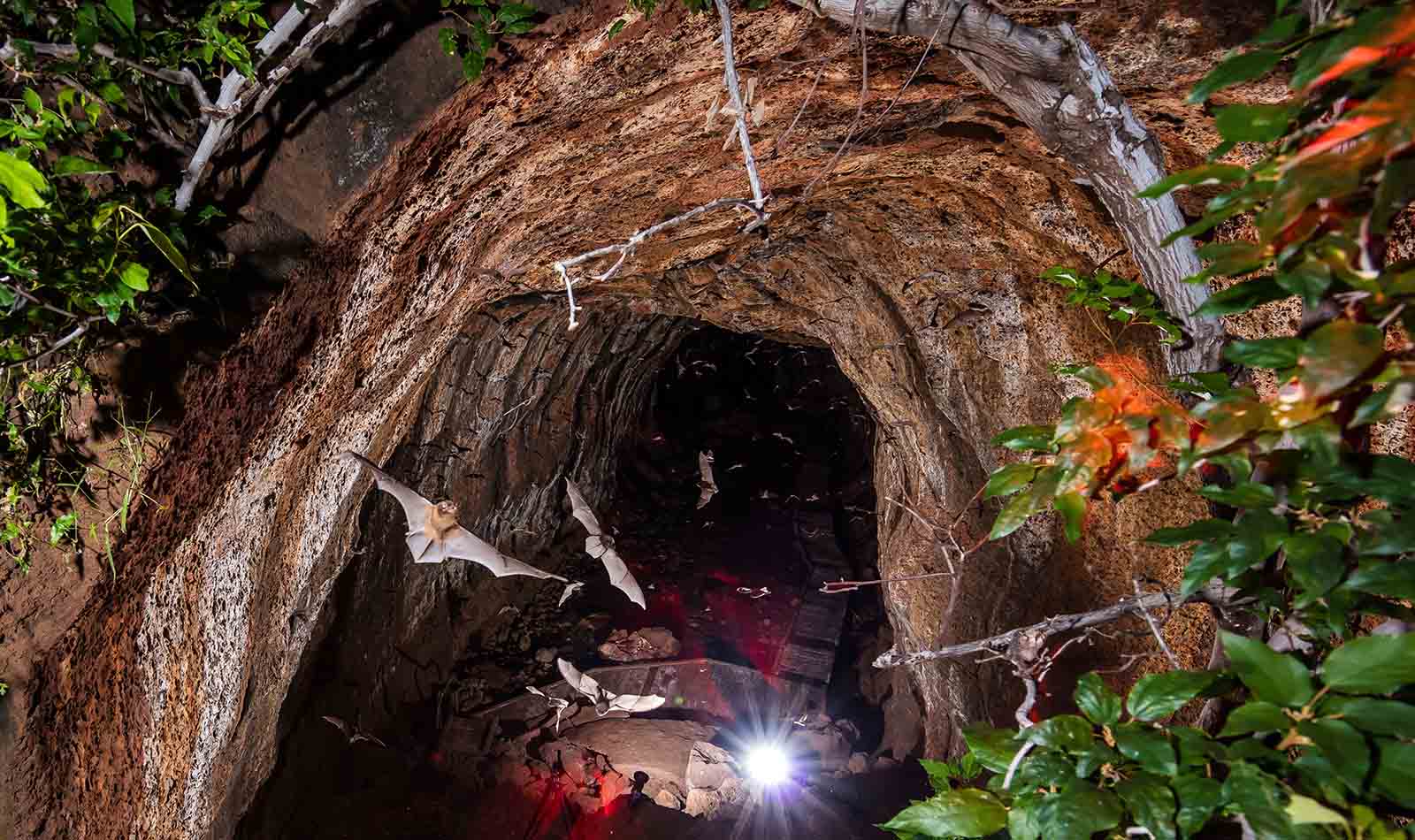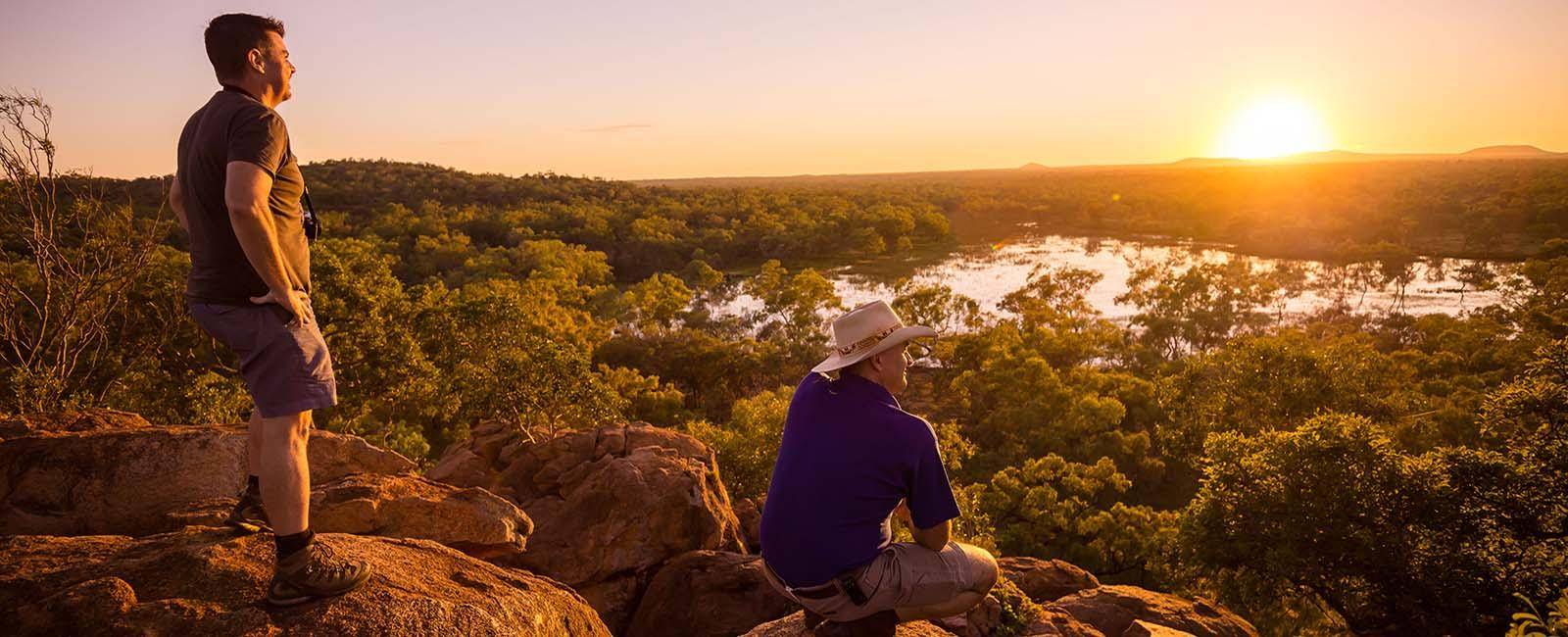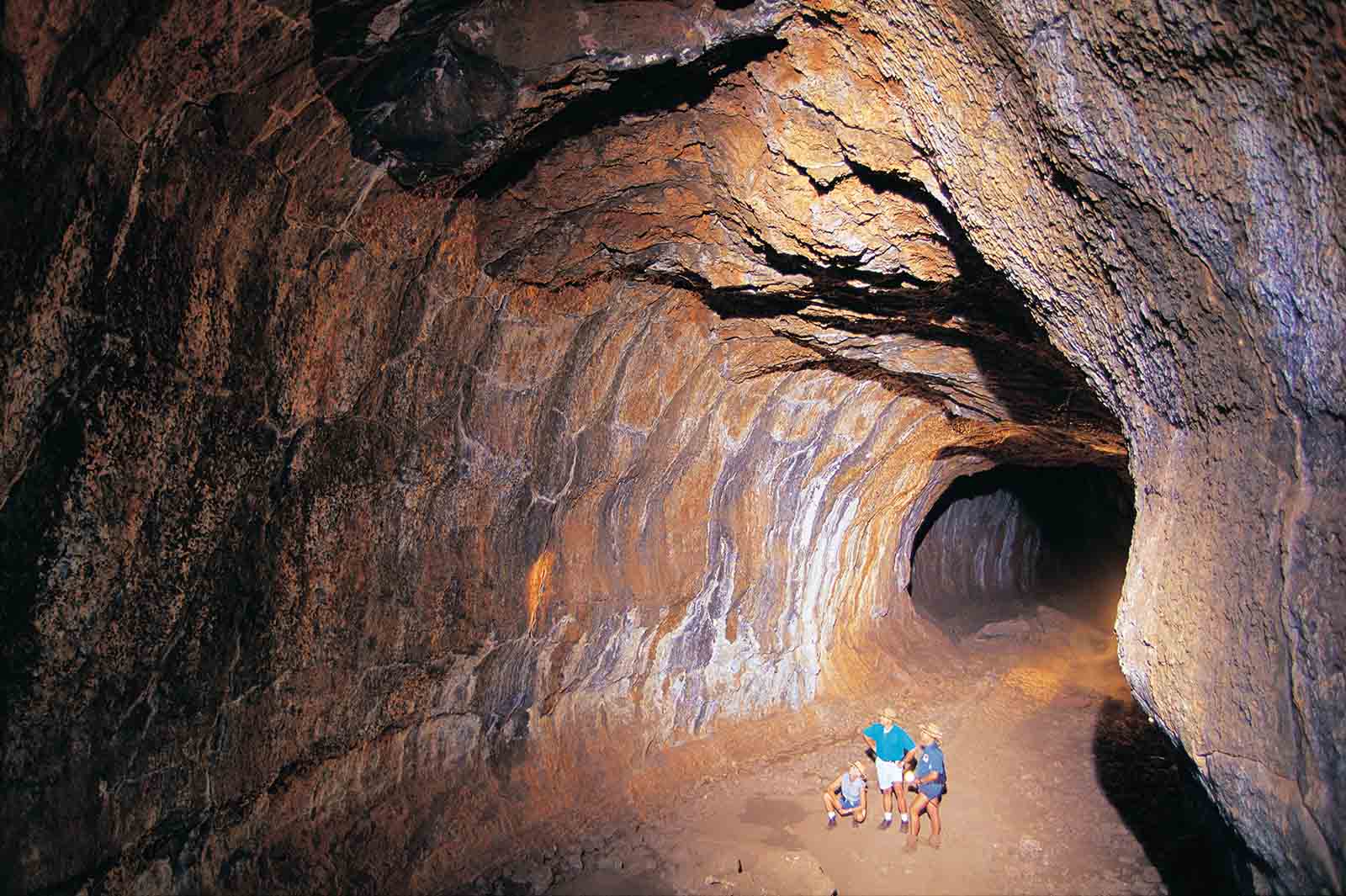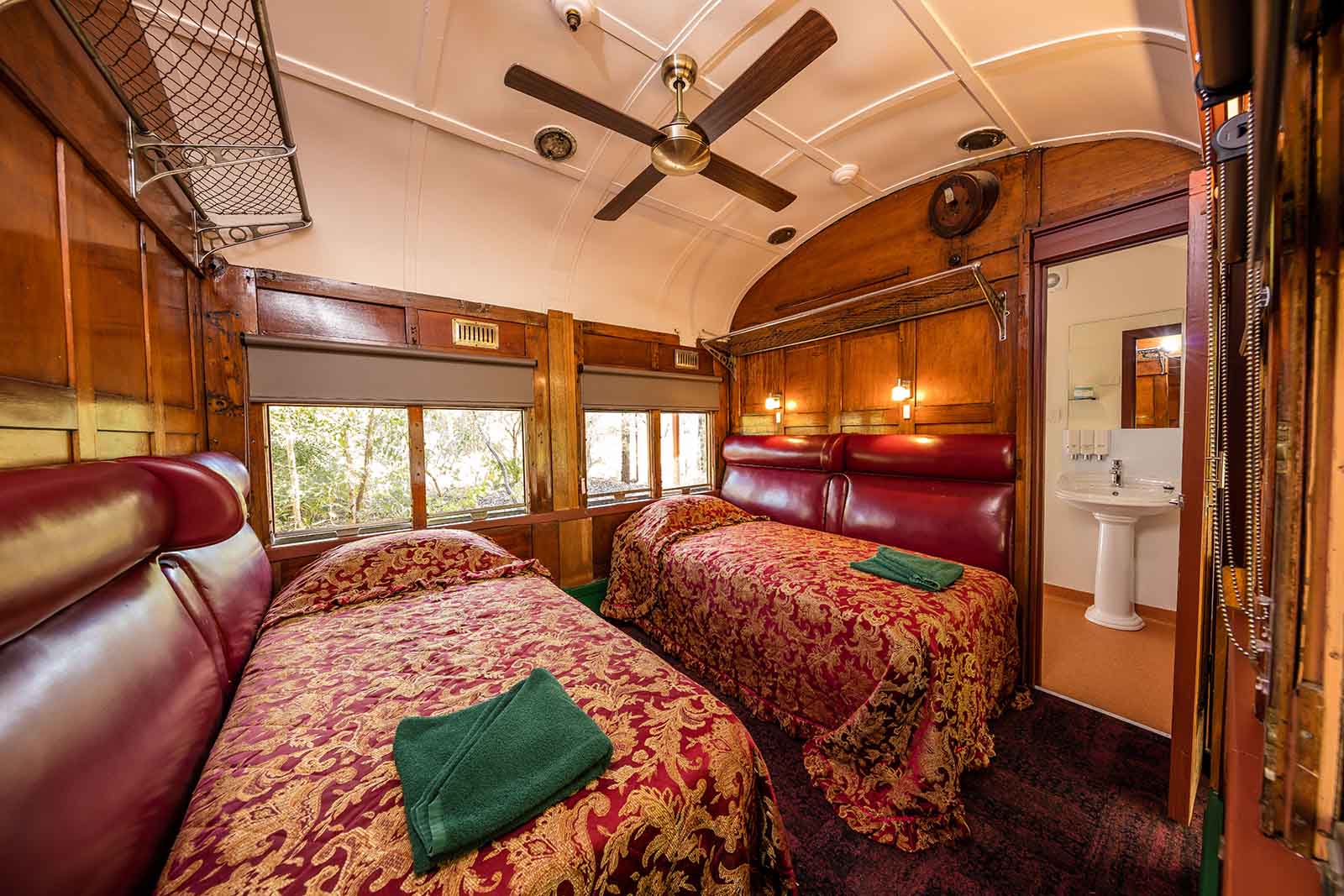
The lava caves in Tropical North Queensland are one of the state’s most unusual tourist attractions.
“Take my hand, I have something to show you,” says Bram Collins as he leads us into one of Queensland’s truly unique geographical wonders: the Undara lava tubes, about four hours drive south west of Cairns.
“I think I was about seven when I first heard these words,” recalls Collins, the fifth generation of his family to call this patch of Queensland home.
We stand surrounded by the prehistoric walls, weathered and browned. It feels serene, almost as if I am on another planet and I pinch myself back into reality. The cool air is tainted ever so slightly, a raw, earthy smell but also refreshing and invigorating in this tropical part of Queensland, above the path where millions of tonnes of lava once flowed.
Collins’ passion for the place is obvious as he guides us through one of the oldest and best preserved lava tube cave systems on Earth. It’s also the longest lava flow from a single volcano vent and even Sir David Attenborough has marvelled at this natural wonder.
The long way
‘Undara’ is an Aboriginal word meaning ‘long way’ and the lava tubes and caves were formed about 190,000 years ago when a large volcano erupted violently, spewing an estimated 23 billion cubic metres of molten lava over the surrounding landscape, flowing so rapidly it could have filled Sydney Harbour in six days.
As the top outer-layer cooled and formed a crust and the molten lava below drained outwards, a series of hollow tubes was left behind providing ideal conditions for dry rainforest to grow and wildlife to shelter. Rock-wallabies and owls roost in the cool while birds shelter in the fruit-filled canopy. The lava caves are also home to thousands of insect-eating bats which create an amazing display as they fly out at dusk.
Inside the caves
To date, 69 different caves have been surveyed but only six are open for public tours. Bayliss Cave is considered one of the world’s most important, stretching more than a kilometre long, 20 metres wide and 11 metres high.
Collins’ enthusiasm for this natural phenomenon is genetic. His father Gerry led him through this adventure playground as a boy, just like Gerry’s father had done with him and it was Gerry who lobbied for the protection of the tubes by developing a sustainable visitor experience. The tubes are surrounded by the Undara Volcanic National Park which also includes the Kalkani Crater.
However, there is more to do in the area than wander ancient lava tubes. There’s bushwalking with nine graded tracks ranging from less than 2km to 12km through grasslands, woodlands and to scenic lookouts – perfect for sunset – that allow close-up experiences with wildlife, and the kangaroos will hardly blink as you go by.
All part of the experience
More than 120 species of birds have been recorded, including the vulnerable red goshawk, and twitchers take note, early mornings are best for birdwatching. Don’t be surprised to find Bram Collins brewing billy tea for the Bush Breakfast at the Ringers Camp while resident kookaburras and currawongs watch from the trees.
There is no better way to finish the day than back around the campfire under a million stars with local guides sharing more stories and a daily update. Then, spend the night in the comfortably renovated train carriages on site – discovered by Gerry Collins on a siding in Mareeba and now repurposed for double and twin accommodation with ensuites.
NEED TO KNOW
- Best time to visit is between March and October. June to August is usually the busiest.
- Tours of the lava tubes last about two hours.
- Access to the lava tubes and caves is only by guided tour.
- Camping is not permitted in Undara Volcanic National Park but there are camp sites, different types of tents, cabins and the train carriages at Undara Experience.
- At more than 700 metres above sea level, Undara’s climate is similar to the Atherton Tablelands with lower humidity and cooler evenings.
GETTING THERE



